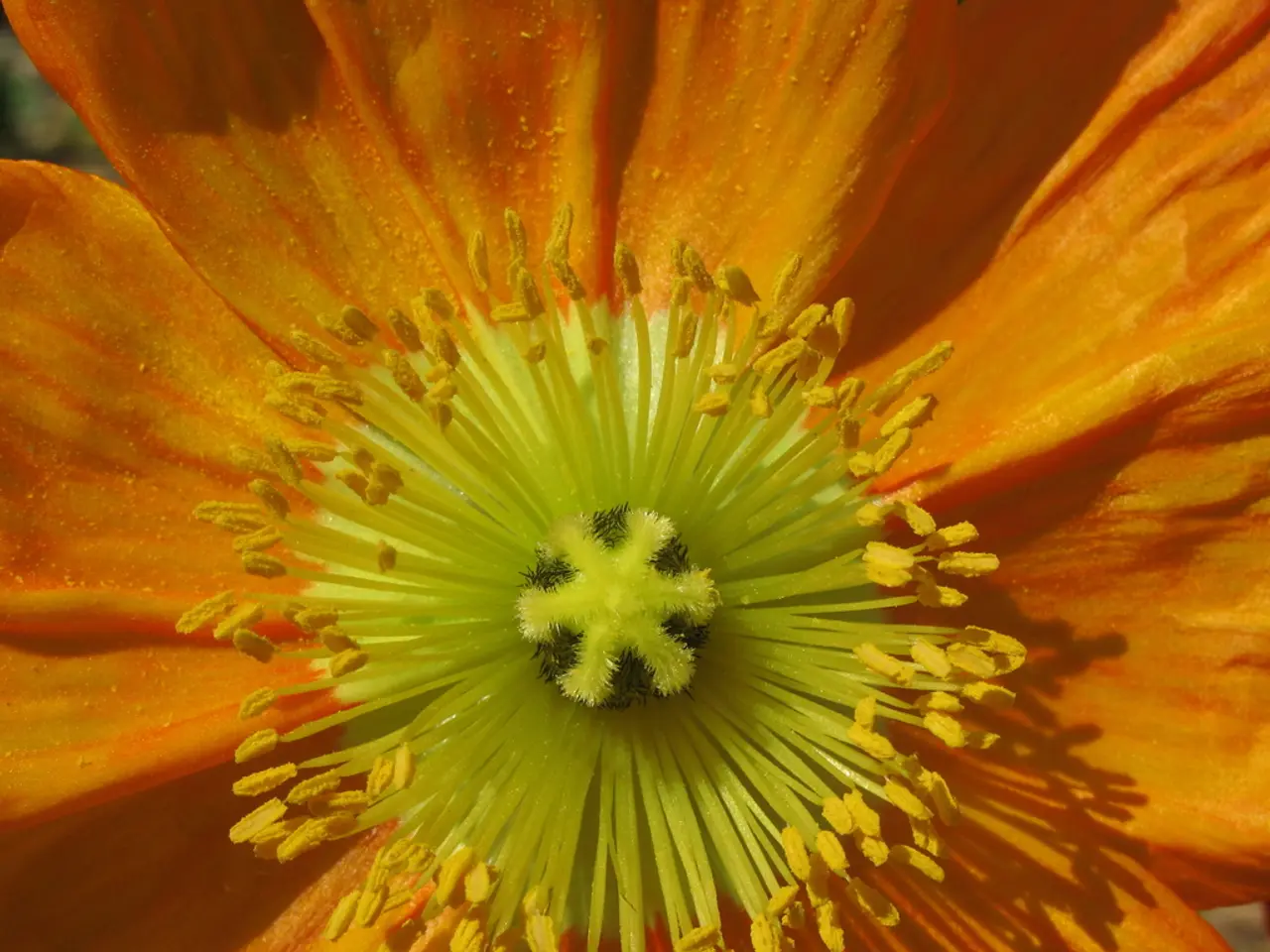Planting Campsis Liana with Orange Gramophones: Tips and Problem-Avoidance Strategies
The Trumpet Vine, scientifically known as Campsis radicans, is a popular choice for garden enthusiasts due to its vibrant orange-red flowers and rapid growth. However, its vigorous nature requires careful management to maintain a healthy and well-controlled garden.
For cultivating and maintaining Trumpet Vine, annual pruning is crucial. This should be done in late winter or early spring. Lateral shoots should be spur-pruned back to within two or three buds of the main stems. Weak or diseased shoots should be removed, and for renovation, cutting back all growth to about 12 inches from the ground can stimulate strong new shoots from the base. Ruthless pruning is essential to control the spread and size of the vine, as it can grow large and heavy, potentially damaging supports like fences or trees.
Climate and watering are essential factors to consider. The Trumpet Vine thrives in various conditions, but deep, infrequent watering is preferable to encourage strong roots. Adjustments to watering frequency may be needed depending on soil drainage and humidity.
One of the advantages of the Trumpet Vine is its attractive flowers, which are appealing for pollinators and ornamental value. It can cover large structures quickly, providing a strong visual impact. However, it can be invasive outside its native range, potentially overwhelming nearby plants or structures. Its aerial rootlets may damage building surfaces or trees by dismembering them, and contact with the plant can cause dermatitis for sensitive individuals.
When it comes to care essentials, providing a sturdy trellis or support for the vine's vigorous climbing is crucial. Monitoring for weak or diseased growth and removing it promptly is also important. Thinning during the growing season can help limit spread, and avoiding overcrowding with other plants is advisable. Watching for potential invasive behavior in your region is also essential.
For those with smaller gardens or who prefer less frequent pruning, alternative climbing plants such as Clematis, Honeysuckle, Star Jasmine, and Climbing Roses may be more suitable. These alternatives typically require less aggressive pruning and pose less risk of invasiveness than the Trumpet Vine.
The Trumpet Vine is cold hardy, withstanding temperatures down to -20°F. When planted in a suitable spot - sunny, spacious, with a sturdy support (metal frame or stone wall) - it can serve as a garden ornament and protect walls from heat and dust. It blooms from early summer until the first frosts, attracting pollinators such as bees and beneficial insects.
Despite its benefits, the Trumpet Vine requires regular pruning and stem control to prevent the garden from becoming impassable orange thickets. Less aggressive climbing plants may be a better choice for smaller gardens or for those who prefer less frequent pruning. Planting the Trumpet Vine near walls or under windows is particularly risky due to its potential to damage structures.
The Trumpet Vine grows well in various soil types, preferring fertile and moist soil. It grows rapidly, reaching heights of 5-10 meters. However, it can suppress neighboring plants, shade them, and compete for nutrients. It requires minimal care and doesn't need frequent fertilization. Its aerial root suckers can penetrate brickwork crevices and damage house facades and fences.
In conclusion, while the Trumpet Vine offers a vibrant and decorative appeal, its vigorous growth requires careful management to maintain a healthy and well-controlled garden. For those with smaller gardens or who prefer less frequent pruning, alternative climbing plants may be more suitable.
To cultivate a Trumpet Vine, annual pruning is essential, typically done in late winter or early spring. Spur-pruning lateral shoots back to within two or three buds of the main stems is important for its growth control.
For smaller gardens or those preferring less frequent pruning, alternative climbing plants like Clematis, Honeysuckle, Star Jasmine, and Climbing Roses might be more suitable, as they typically necessitate less aggressive pruning.




